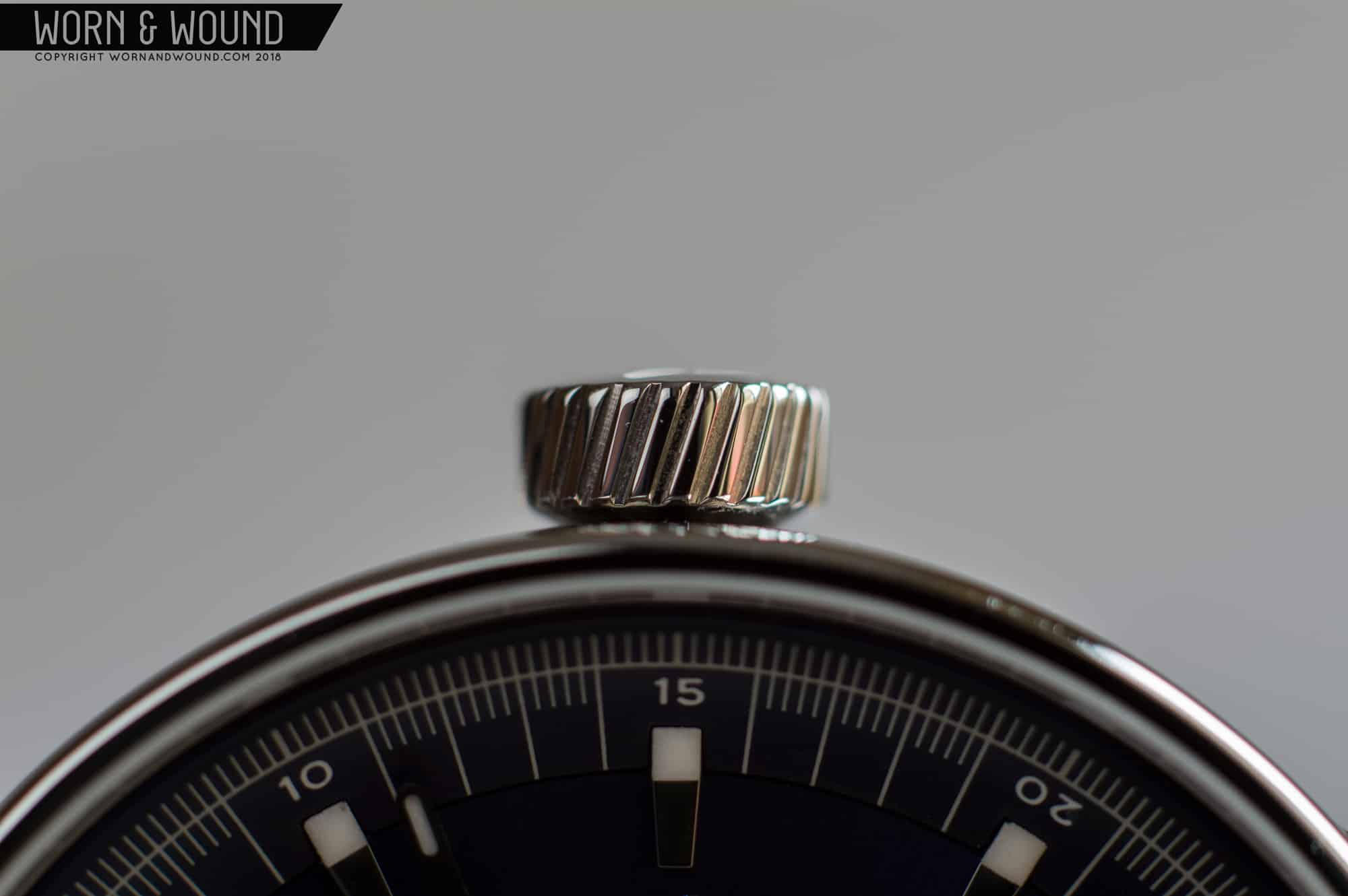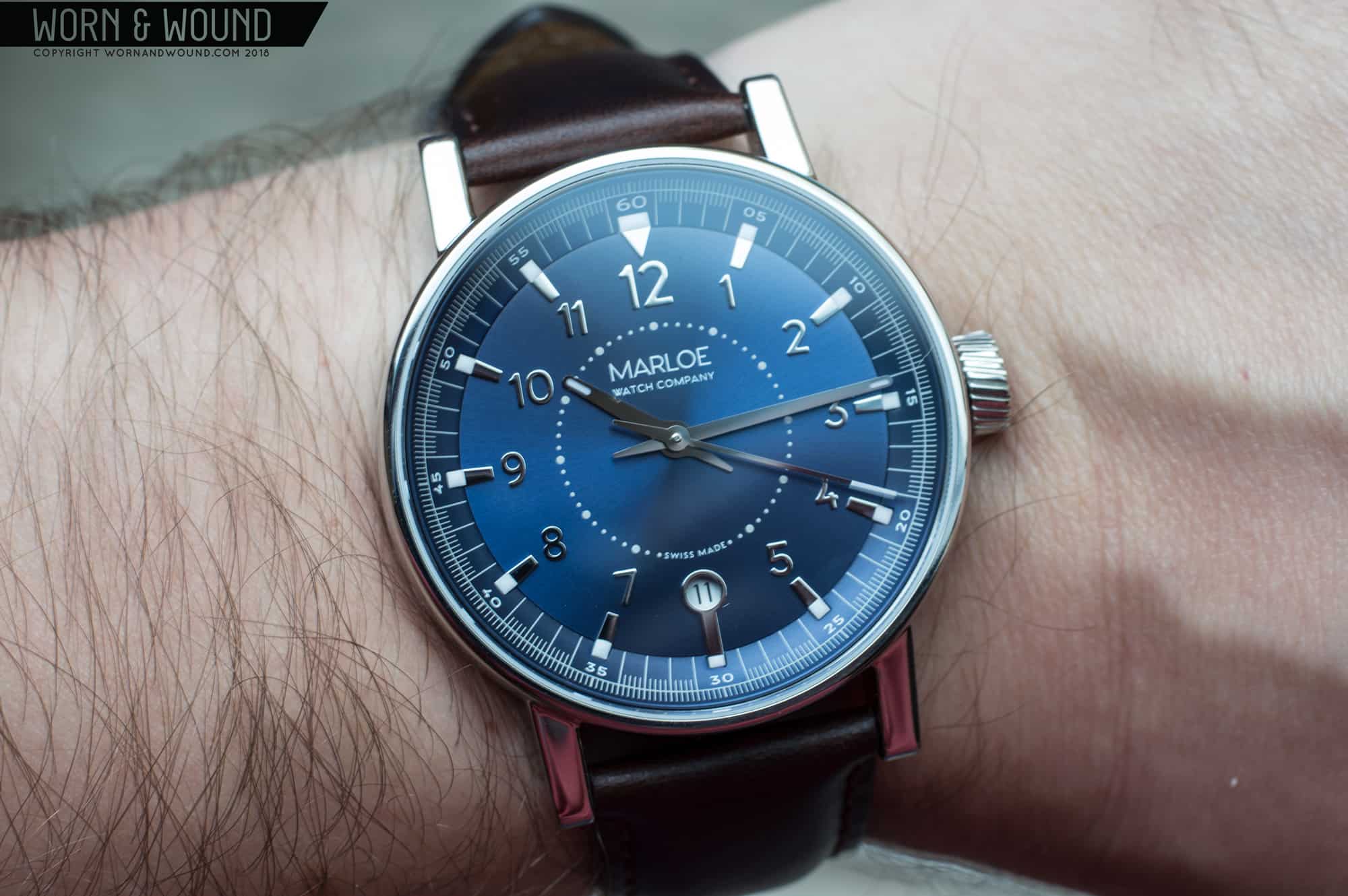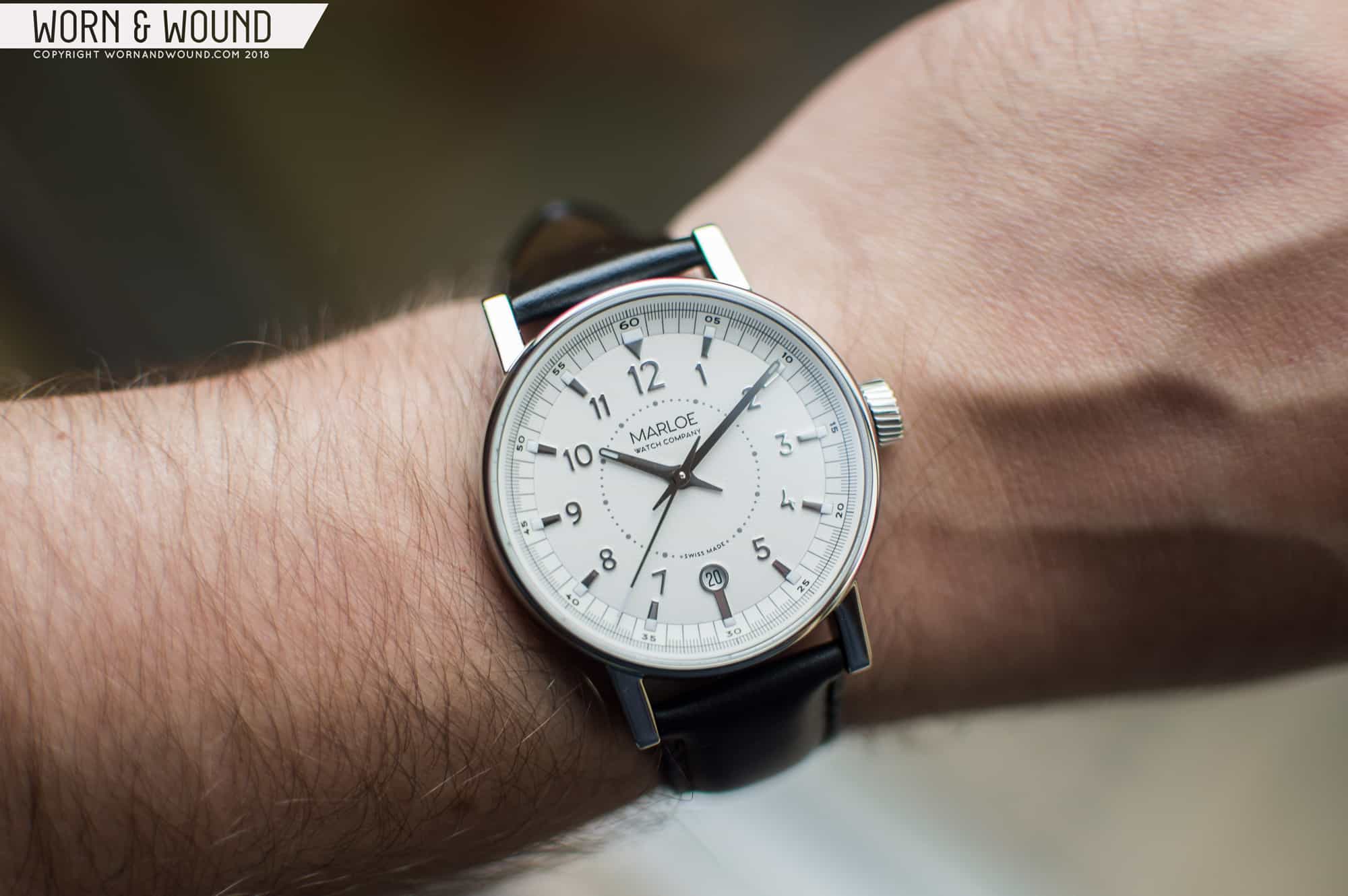British brand Marloe Watch Company (which I’ll simply refer to as Marloe going forward) entered the stage via a successful Kickstarter campaign in February of 2016, launching their stylish Cherwell model. A year later the brand announced their second watch, the Derwent, which was swiftly followed by another crowdfunding campaign for the Seagull ST19 mechanical chronograph, the Lomond Chronoscope. (You can read our reviews of the Cherwell and the Lomond Chronoscope here and here, respectively.) With their first three watches, Marloe had chosen to focus solely on producing hand-wound pieces using movements from Seagull and Miyota. However, Marloe’s latest, the Haskell, is the first Swiss-made watch from the brand powered by an ETA engine, and it’s what we’ll be taking a look at today. 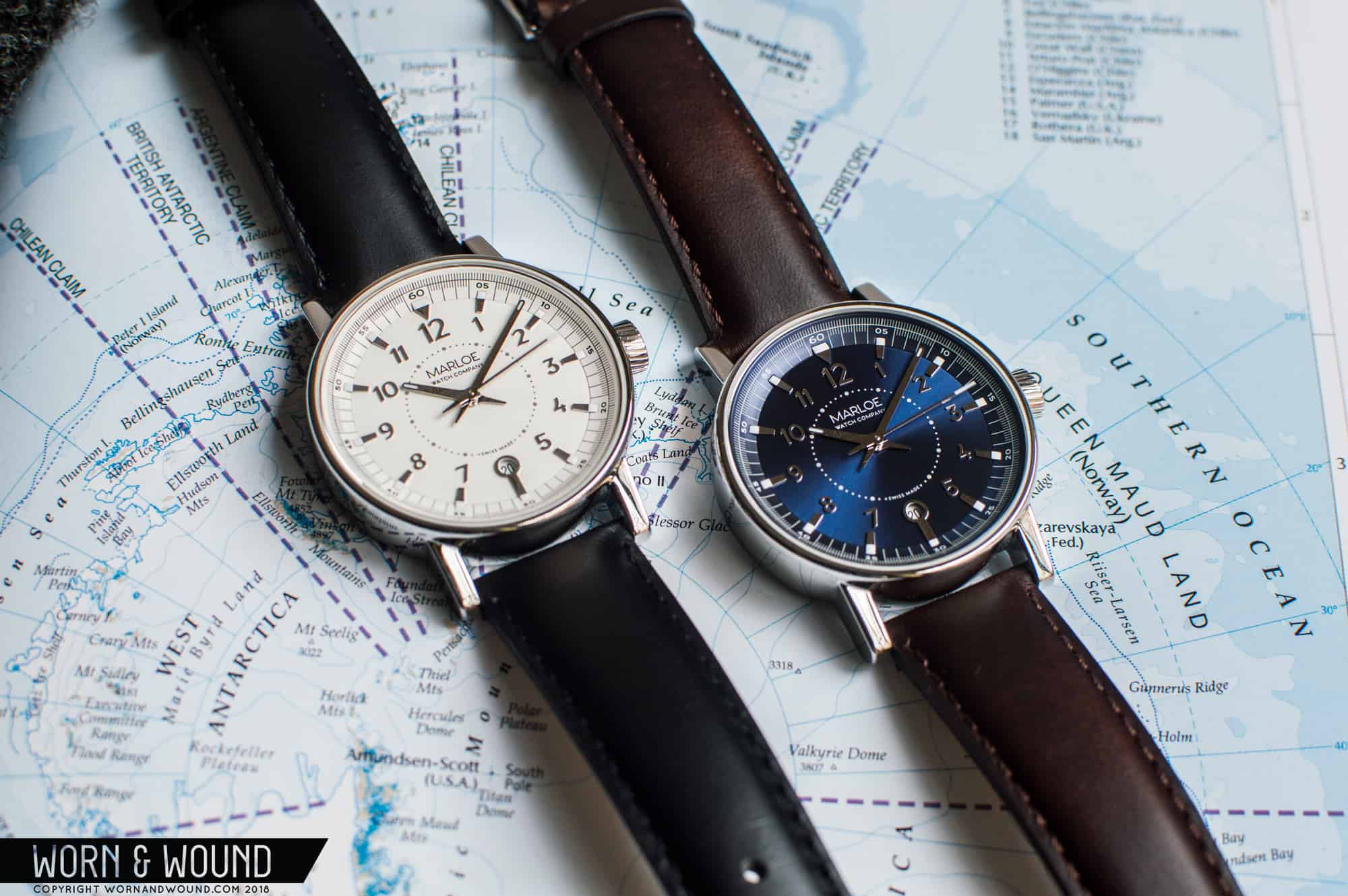 The Haskell (about $1,181 with current exchange rates) takes its name from the Haskell Strait—a body of water between Ross Island and Antarctica where Captain Scott and his team began their Terra Nova Expedition to reach the South Pole. This watch doesn’t guarantee it will be able to survive the extremes of that environment, but it is intended as an everyday wristwatch. My daily routine doesn’t often require 1,000 meters-plus of water resistance or hardened, scratch-proof cases, so this watch should be more than adequate for someone like me (which is, frankly, most of us). Let’s take a closer look.
The Haskell (about $1,181 with current exchange rates) takes its name from the Haskell Strait—a body of water between Ross Island and Antarctica where Captain Scott and his team began their Terra Nova Expedition to reach the South Pole. This watch doesn’t guarantee it will be able to survive the extremes of that environment, but it is intended as an everyday wristwatch. My daily routine doesn’t often require 1,000 meters-plus of water resistance or hardened, scratch-proof cases, so this watch should be more than adequate for someone like me (which is, frankly, most of us). Let’s take a closer look.
Review: Marloe Watch Company Haskell
Review: Marloe Watch Company Haskell
Case
The Marloe Haskell is fairly moderate in size (40mm wide with a lug-to-lug of about 48mm), but due to the high polish finish to the entirety of the stainless steel case it can appear more substantial from certain angles than it actually is. In particular, the case sides are a single polished surface with no breaks or changes in finish, but the risk of becoming too tall and cylinder-like is offset by the subtle barrel shape given to the watch. There is no protrusion on the underside of the watch from the case back, and there is no dome to the crystal above, so the 9.4mm thickness is fully represented by the case itself. Depending on your tastes, this pronounced presence of the polished stainless steel could be a benefit or a hindrance, but it certainly feels like a sub-10mm watch on the wrist. Viewing the watch directly face-on tells a slightly different story. The thin bezel is barely noticeable as the dial draws the eye in. This view of the Haskell is slightly at odds with the shiny expanse of the case walls and gives the watch a different character each way your eye catches it.
Viewing the watch directly face-on tells a slightly different story. The thin bezel is barely noticeable as the dial draws the eye in. This view of the Haskell is slightly at odds with the shiny expanse of the case walls and gives the watch a different character each way your eye catches it.
The lugs play a part in that shift, too. From the side, the lugs are nicely sloped to give an elegant look and a comfortable fit on the wrist, but they are much more prominent when viewed face on. From this vantage point, the lugs can appear almost straight and boxlike jutting out from the case, but this is far from an accurate portrayal. Most of the time, however, you are likely to see each individual and divergent aspect as a pleasing mix between the two extremes. Marloe have opted for a solid case back on this model, and in keeping with the Haskell name the case back features a map of Antarctica in relief sitting just inside the bottom of the case sides. Though it looks as though this is a one-piece case, there’s actually a small lip at six between the lugs for removing the case back and accessing the movement. (Editor’s note: an earlier version of this review incorrectly stated that this was a one-piece case.)
Marloe have opted for a solid case back on this model, and in keeping with the Haskell name the case back features a map of Antarctica in relief sitting just inside the bottom of the case sides. Though it looks as though this is a one-piece case, there’s actually a small lip at six between the lugs for removing the case back and accessing the movement. (Editor’s note: an earlier version of this review incorrectly stated that this was a one-piece case.)
The push/pull crown also has a polished finish with an angled rifling texture to it. I don’t know whether this has a great impact on the ease of operation, but it is a nice detail nevertheless. The Marloe “M” is etched on the top.
Dial
Four different dial colors are available across two different finishes: deep green and blue with a sunburst finish, and white and sand with a textured, paper-like finish. I have to say that while the sunburst finish is pleasing, the lighter textured dials are the stars being both slightly less common and exceptionally well done.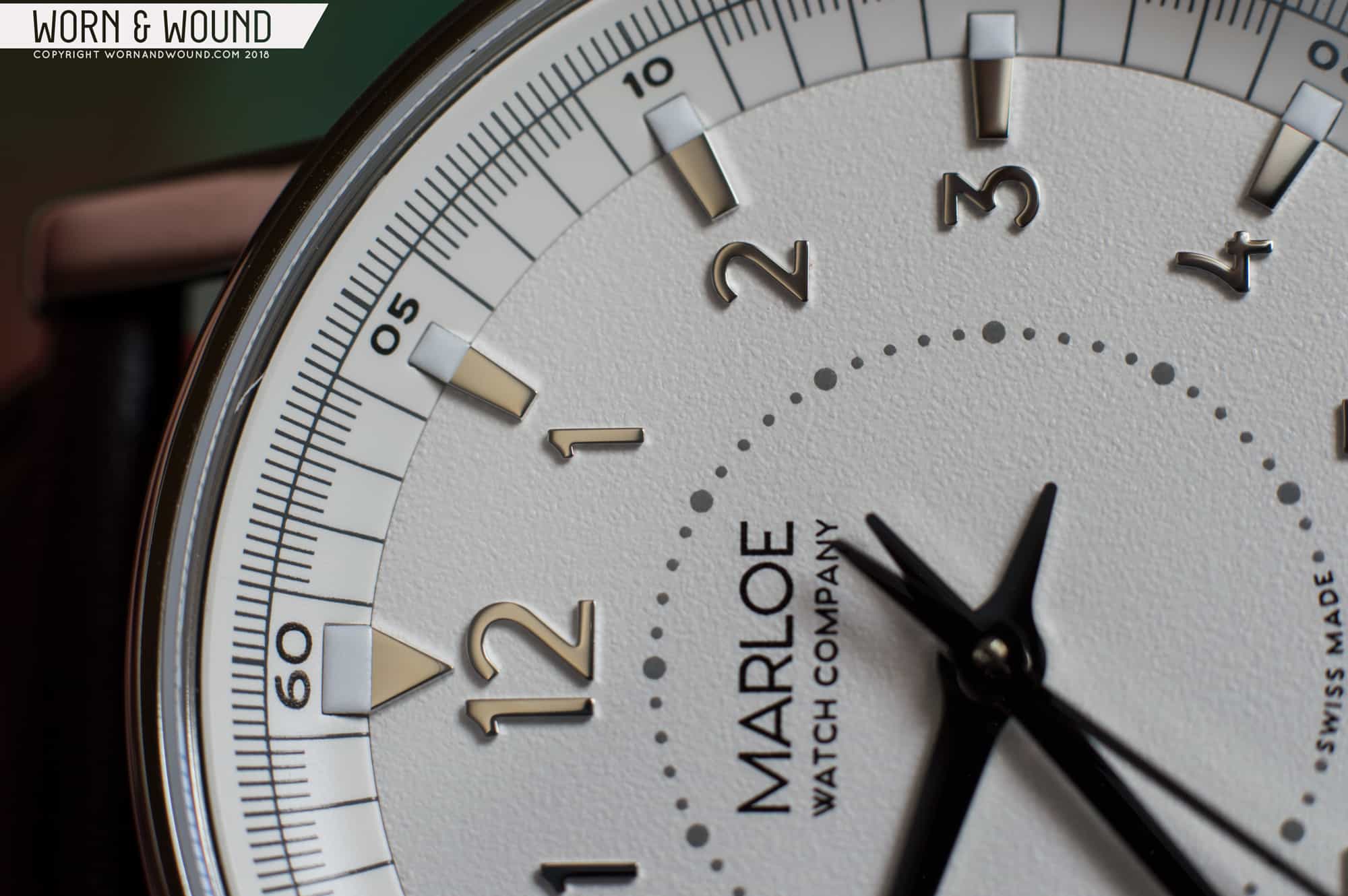 Each dial has the same layout with applied, polished indices and accompanying Arabic numerals around the dial with matching polished hands. The numeral at six o’clock is omitted and replaced by a date window. I’m always happy to see the date shown at the six o’clock position and in this case the accompanying index is extended to frame the window, bringing it into the design rather than leaving it to look like an afterthought. This detail is echoed at the top of the dial by a slightly enlarged 12. The flat areas of the polished hands and indices catch a lot of light as expected, but legibility is still pretty good—aided in part by the internal AR coating.
Each dial has the same layout with applied, polished indices and accompanying Arabic numerals around the dial with matching polished hands. The numeral at six o’clock is omitted and replaced by a date window. I’m always happy to see the date shown at the six o’clock position and in this case the accompanying index is extended to frame the window, bringing it into the design rather than leaving it to look like an afterthought. This detail is echoed at the top of the dial by a slightly enlarged 12. The flat areas of the polished hands and indices catch a lot of light as expected, but legibility is still pretty good—aided in part by the internal AR coating.
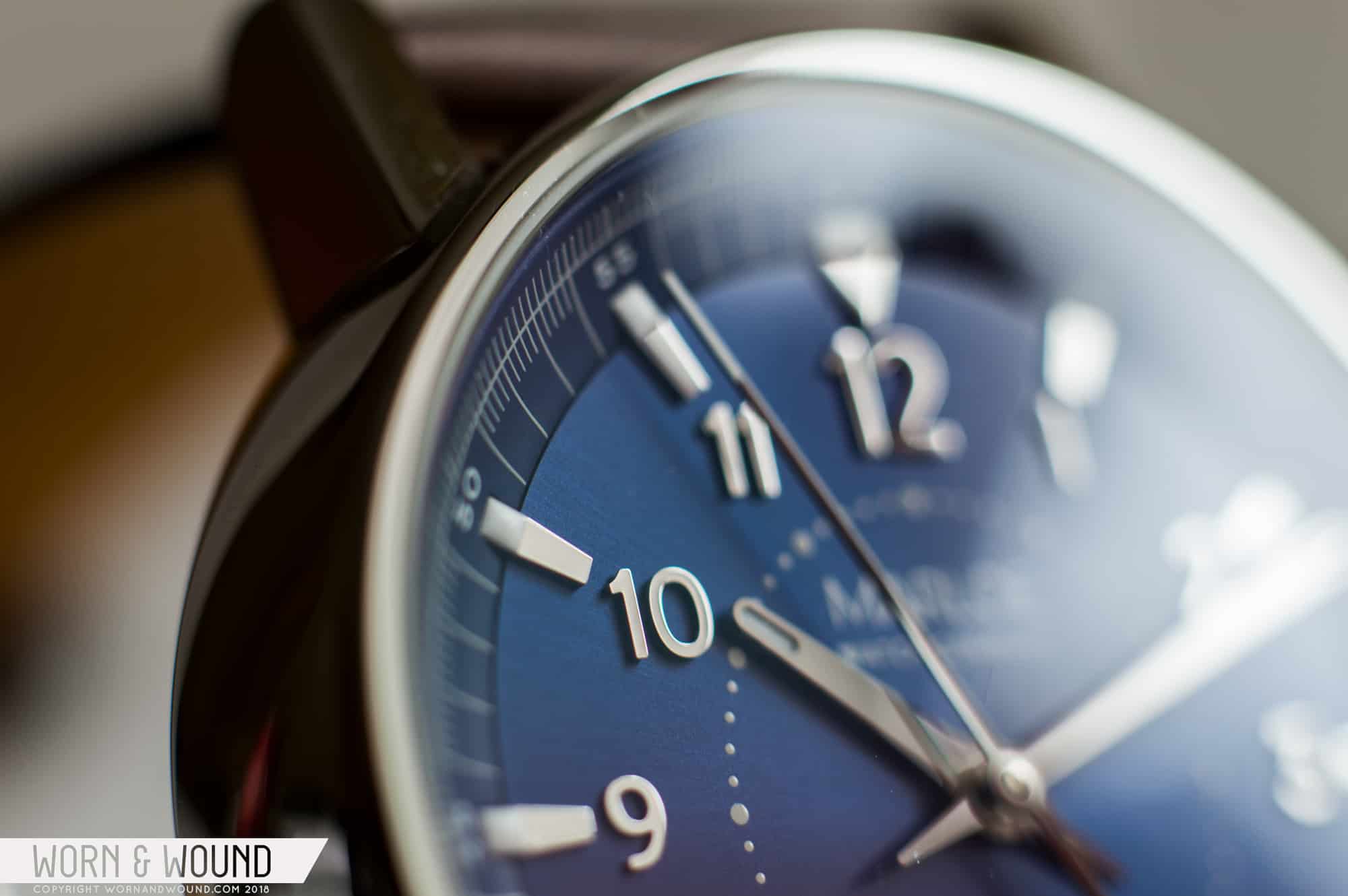 Around the edge of the dial is a minute track with minute markers just outside each hour index. It is only on closer inspection that the chapter ring is noted to be concave and it forms a neat transition from the outer area of the dial to the underside of the crystal. This little touch is a nice way to give the dial some depth without the absolute distance between the crystal and the dial being exposed.
Around the edge of the dial is a minute track with minute markers just outside each hour index. It is only on closer inspection that the chapter ring is noted to be concave and it forms a neat transition from the outer area of the dial to the underside of the crystal. This little touch is a nice way to give the dial some depth without the absolute distance between the crystal and the dial being exposed.
Aimed at being an everyday watch, the Haskell does feature lumed hands and indices. The lume in both areas is small enough not to detract from the design. Although the lumed areas on the indices are sufficient, the hands only feature a small amount towards the tips. The lume is there and can be seen in the dark, but the elegance in daylight takes priority over readability at night here.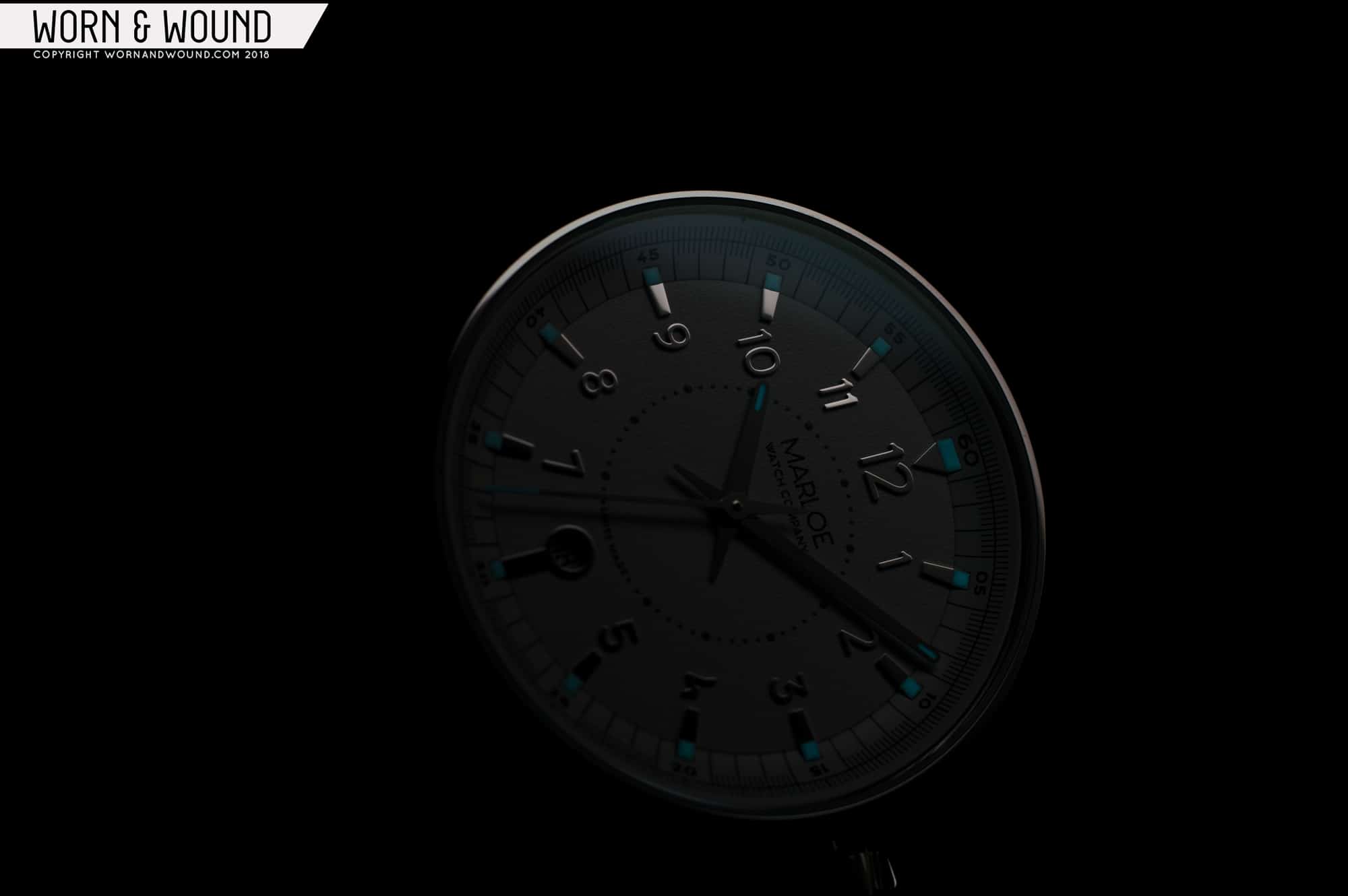
Movement
As mentioned above, Marloe are focused on hand-wound watches, and for their first Swiss-made watch they’ve have decided to go with the ETA 2804-2 movement. This movement is well-known to many and it’s similar in most ways to its automatic cousin, the ETA 2824-2, with both beating at 28,800 bph and featuring hacking seconds, a date display and a 42-hour power reserve. Here, the date wheel is printed to be used with a window at six o’clock. The thinness of a hand-wound movement—the ETA 2804-2 comes in at under 3.4mm—lends itself to watches where sliding under a shirt cuff and comfort on the wrist are paramount.
Straps and Wearability
Each watch is delivered on a leather strap—in this case, the blue dial on a rich chocolate brown strap and the white dial on a black strap. The combination of white on black does become quite formal, but the pairing of the white dial and chocolate strap gives it a lot more character. Each strap features a polished tang buckle with the same “M” engraving as the crown. The 20mm lug width gives the opportunity for a wide range of strap changes, though dressy leather is going to be the most suitable pairing.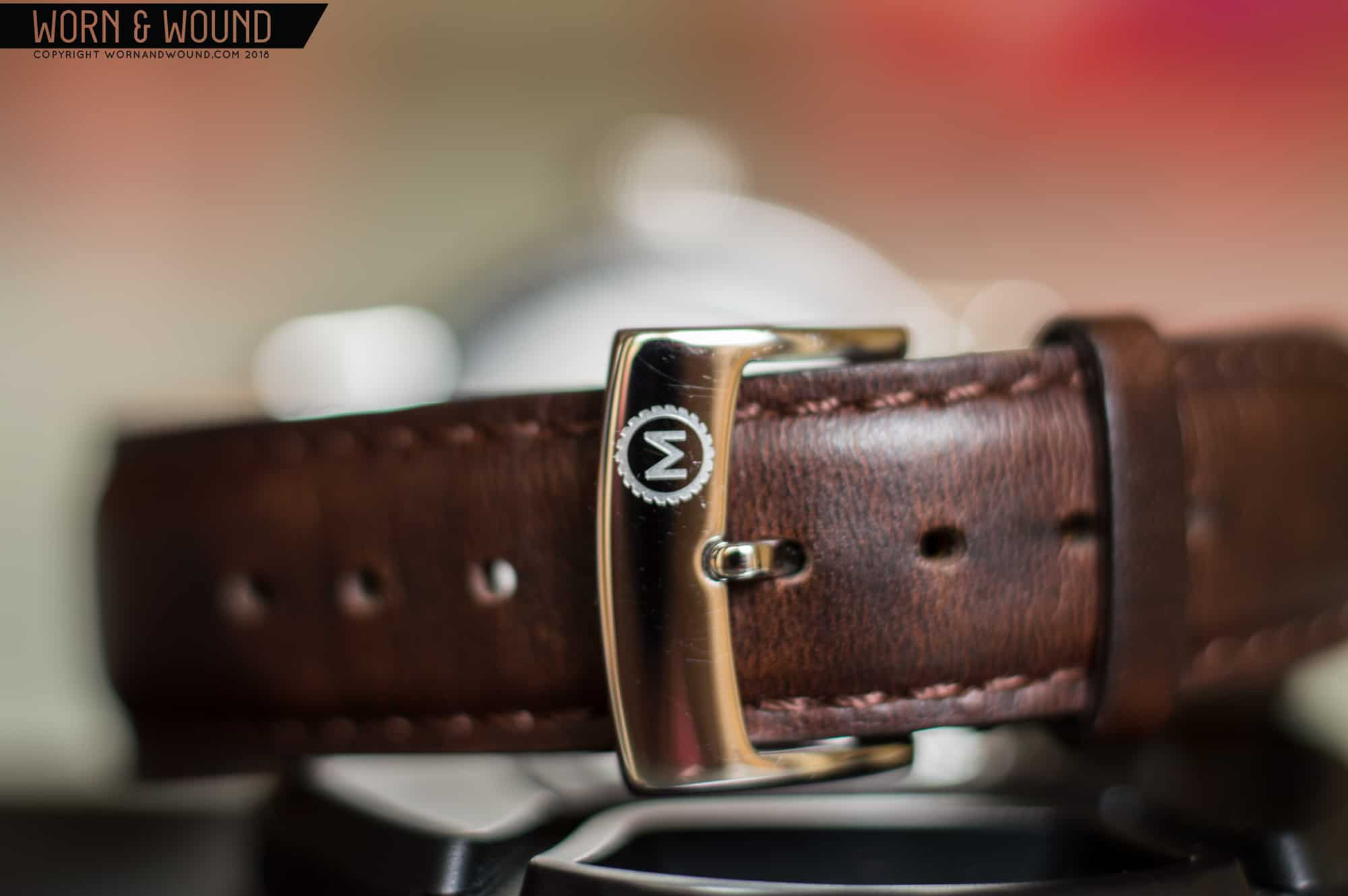 On the wrist, the apparent height suggested by the polished case sides evaporates, and combined with the 40mm diameter it feels like the unobtrusive hand-winder that it is. That said, with almost no bezel and a concave-edged dial, 40mm is probably as large this kind of watch should be. It strikes the right balance of feeling small enough while certainly looking large enough.
On the wrist, the apparent height suggested by the polished case sides evaporates, and combined with the 40mm diameter it feels like the unobtrusive hand-winder that it is. That said, with almost no bezel and a concave-edged dial, 40mm is probably as large this kind of watch should be. It strikes the right balance of feeling small enough while certainly looking large enough.
Conclusion
On the whole, the Marloe Haskell doesn’t try to do too much, but what it does do it does rather well. The more time I spent with it, the more small details I found. There’s plenty to like as a starting combination, but it’s the attention to detail in the dial finishing, concave chapter ring, date window, case back and notably the changing form and persona of the case that elevate the Haskell above the totality of its specs. I wouldn’t recommend it as the ideal watch for any Antarctic expeditions, but in everyday life it’s probably smart enough for all but the most formal of dress codes and yet interesting enough to wear every day and still appreciate its character. Marloe Watch Company









 Featured Videos
Featured Videos







